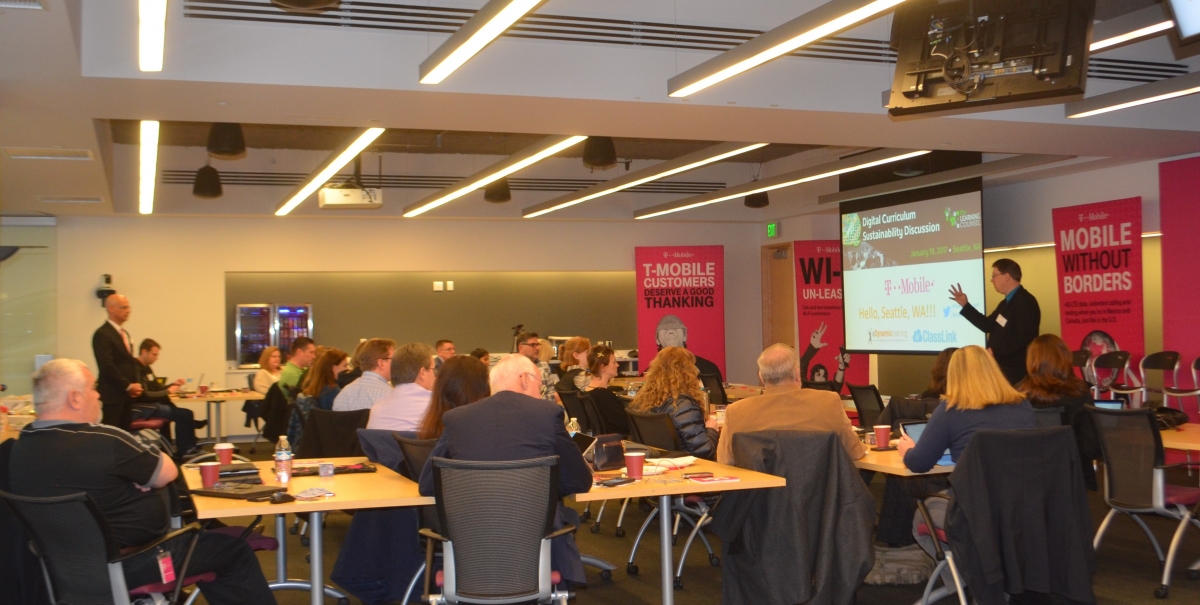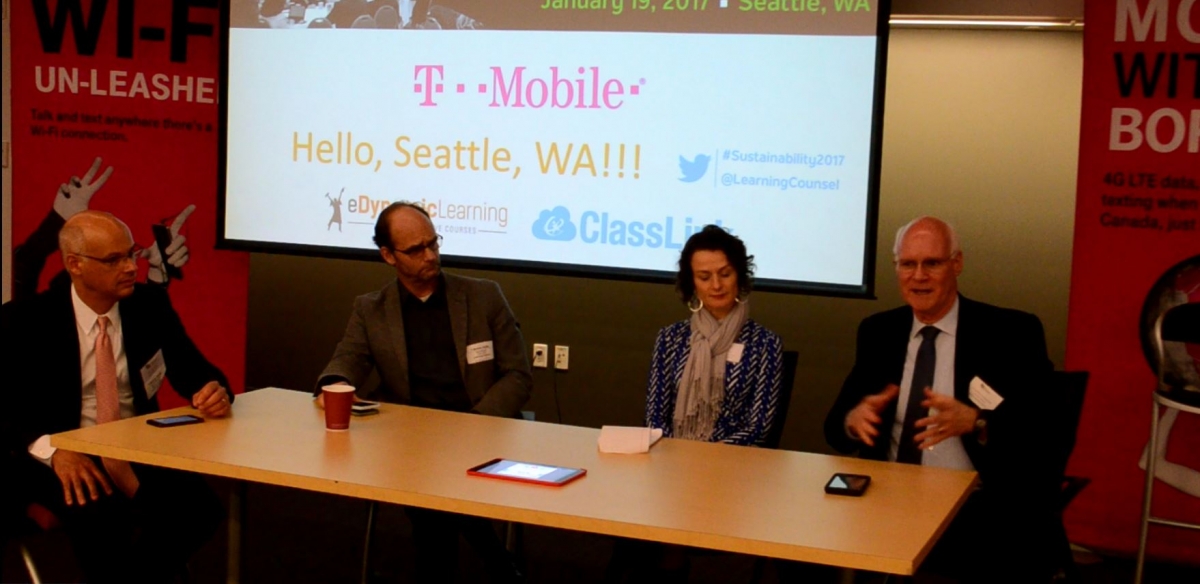T-Mobile headquarters was the site of the annual Seattle Digital Curriculum Sustainability Discussion for 2017. Education executives, principals as well as teachers arrived from schools and districts across the region. They came to hear from the Learning Counsel on the state of the digital shift across the county, gain insight into tactics for sustainable transformation and also share their own stories and successes so all could use the data to address the challenges they’re facing.
Mark Finstrom is the Chief Technology Officer of Highline Public Schools in Burien, WA, just south of Seattle. His district brings together five cities with thirty-nine schools and twenty-one thousand students. They’re not quite 1-to-1 but have twenty thousand devices in circulation, plus allow BYOD (Bring Your Own Device). He shared where his district stands on shifting to digital. “We’ve been making good progress since beginning our transformation,” he told the audience. “We’re seeing higher test scores and the graduation rate has gone up 7% in the last four years. We’re trying to keep screen learning at about 30% of classroom time. A key issue for us right now is access—around campuses and at home. We have to handle the connectivity.”
Sustainability is a challenge all school districts are facing as they t
Ellen Dorr, Director of Digital Learning for Renton School District spoke further to the point of how teaching and learning is going more and more fully digital. “We’re no longer talking about how the tech is a new thing. We’re getting much more intentional about how to enhance every aspect of learning—how to use digital curriculum in core instruction, not something on the side just for intervention or extra-curricular.” Renton is at approximately 1 device per 4 students and they have five digital learning coaches to support all of the schools, in addition to specialist teachers. “Our focus now is to get more real about our use of digital resources – that’s the main thing, not once-in-awhile use like we had happening with Dreambox in some schools. If we’re going to pay for professional software and tools it needs to be used with intention.”
Photo Gallery: Seattle Discussion
LeiLani Cauthen, the CEO and Publisher at the Learning Counsel shared what was found with the national Digital Curriculum Strategy survey of 708 education executives, completed in October of 2016. She further briefed the group on insights gleaned from talking with education leaders across the U.S. and where we’re headed as an industry. “Expositional learning is where this is going. The schools and districts that are ‘cutting edge’ and have pushed the proverbial envelope are giving their students experiences through their use of tech and digital curriculum. VR (virtual reality) and AR (augmented reality) are part of this. But also maker spaces with robotics and apps that are connected to devices that students today use every day in their lives. This is making it real – an experience that then is a new learning moment.”
“Leaders who are looking more deeply into what new software tools and courseware does and can accomplish, how it works, are the ones making big strides in pushing their district forward,” she said. “Leaders who are ‘hands-off’ managers are too far removed from the challenges and chaos we’re all in right now.”
What LeiLani said she has been really impressed with is vendors for the education industry who take the time to show executives what is really happening
The day ended with a leadership panel with Dr. Paul Zimmerman, Executive Director of Renton Preparatory School; Ellen Dorr, Director of Digital Learning for Renton School District and John Krull, Chief Information Officer for Seattle Public Schools.











